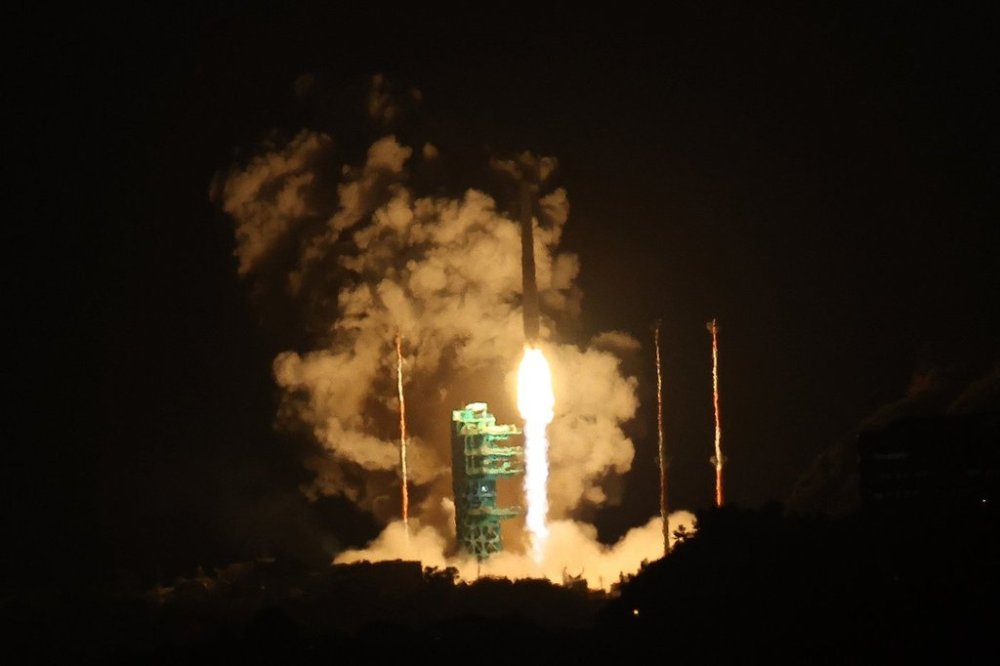South Korea’s largest satellite launched on Nuri rocket in ambitious space mission
Advertisement
Read this article for free:
or
Already have an account? Log in here »
To continue reading, please subscribe:
Monthly Digital Subscription
$0 for the first 4 weeks*
- Enjoy unlimited reading on winnipegfreepress.com
- Read the E-Edition, our digital replica newspaper
- Access News Break, our award-winning app
- Play interactive puzzles
*No charge for 4 weeks then price increases to the regular rate of $19.00 plus GST every four weeks. Offer available to new and qualified returning subscribers only. Cancel any time.
Monthly Digital Subscription
$4.75/week*
- Enjoy unlimited reading on winnipegfreepress.com
- Read the E-Edition, our digital replica newspaper
- Access News Break, our award-winning app
- Play interactive puzzles
*Billed as $19 plus GST every four weeks. Cancel any time.
To continue reading, please subscribe:
Add Free Press access to your Brandon Sun subscription for only an additional
$1 for the first 4 weeks*
*Your next subscription payment will increase by $1.00 and you will be charged $16.99 plus GST for four weeks. After four weeks, your payment will increase to $23.99 plus GST every four weeks.
Read unlimited articles for free today:
or
Already have an account? Log in here »
SEOUL, South Korea (AP) — South Korea launched its largest satellite yet on its nationally developed space rocket early Thursday, the fourth of six planned launches through 2027.
The three-stage Nuri rocket lifted off from the country’s spaceport on an island off the southwestern coastal county of Goheung. Aerospace officials said the rocket placed a 516-kilogram (1,137-pound) science satellite and 12 microsatellites into a target orbit about 600 kilometers (372 miles) above Earth. The Korea Aerospace Administration was expected to verify in the coming hours whether the satellites were successfully transmitting signals.
The main satellite is equipped with a wide-range airglow camera to observe auroral activity and separate systems for measuring plasma and magnetic fields and for testing how life-science experiments perform in space.

The dozen smaller “cube” satellites, developed by university teams and research institutions, include GPS systems to study Earth’s atmosphere, infrared cameras to track plastic in the oceans, and systems for testing solar cells or communication equipment.
Thursday’s event was the country’s first launch involving a Nuri rocket since May 2023, when it successfully placed a 180-kilogram (397-pound) observation satellite into orbit, and the fourth overall since its first attempt in October 2021, which failed to deliver a dummy device.
Further launches are planned in 2026 and 2027 as part of a multiyear project to advance the country’s space technologies and industries, and to reduce the gap with leading Asian space powers, such as China, Japan and India.
Nuri is a three-stage rocket powered by five 75-ton-class engines in its first and second stages and a 7-ton-class engine in its third stage, which releases the payloads at the desired altitude. It’s the country’s first space launch vehicle built primarily with domestic technology, a core asset for a nation that had largely relied on other countries to launch its satellites since the 1990s.
The Naro Space Center, South Korea’s lone spaceport, saw its first successful launch in 2013 with a two-stage rocket built with Russian technology, following years of delays and repeated failures. The rocket reached its target altitude during its first test in 2009 but failed to deploy a satellite, and then exploded shortly after liftoff during its second test in 2010.

